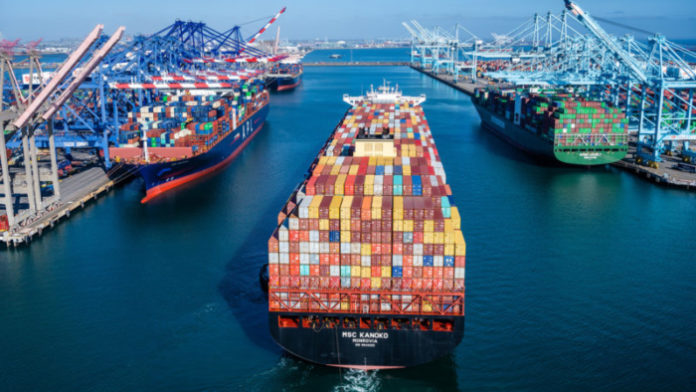
-
Rates of 40-ft containers have declined for the 26th consecutive week, dropping 39% from a year ago
-
Drewry’s WCI composite index had retreated 4% as of August 25 to US$5,986 per 40-ft box
-
The index is now 42% off its $10,377 peak in September last year
Sliding world container rates declined for the 26th consecutive week as of August 25, dropping 39% from the same week last year, supply chain advisers Drewry reported.
The Drewry World Container Index composite index had decreased 4% as of August 25 to US$5,986 per 40-foot container. The index is now 42% below its peak of $10,377 in September 2021, Drewry said.
The index, however, remains 64% higher than the 5-year average of $3,648, Drewry said.
The average composite index for the year to date is $7,995 per 40-ft container, $4,347 higher than the 5-year average, the rate watcher said.
The composite index was 4% lower at $5,985.53 per 40-ft container. It is now 39% lower than in the same week in 2021.
Freight rates on the Shanghai–Los Angeles trade fell 6%, or $394, to $6,127 per FEU. Spot rates on the Shanghai–Rotterdam route declined 5%, or $420, to $8,010 per 40-ft container.
Rates on the Shanghai–Genoa and New York–Rotterdam routes retreated 2% each to $8,391 and $1,278 per 40-ft box, respectively. Similarly, rates on the Shanghai–New York trade eased 1% to $9,569 per FEU.
Container rates on the Los Angeles–Shanghai, Rotterdam–Shanghai and Rotterdam–New York hovered around the previous week’s level. Drewry said it expects the index to decrease further in the next few weeks.
Rates have been retreating steadily from their dizzying heights during the 2021 peak season, when chaotic situations at United States and European ports not well equipped to handle increased volumes of pre-holiday shipments from Asia caused serious congestion and ship delays that forced liners to raise rates.
In October last year, Drewry forecast that the global supply chain situation was deteriorating and would not normalize after the Chinese New Year in February 2022 as initially thought, but only by the end of this year.
In a Container Forecaster report, Drewry also said that rising Delta cases had raised the risk for further restricted logistics capacity through more lockdowns or stricter working protocols, while the nearing expiration of the US West Coast dockworkers contract loomed as a disruptive risk.
Drewry raised again its forecasts for container freight rates and carrier profitability in view of the prolonged disruption.




